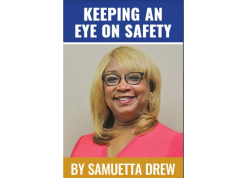By Samuetta Hill Drew
There has been much written by scientists and researchers around the world, along with our own national media coverage, about the need for or against a COVID-19 booster shot by primarily Pfizer BioNTech. While there has been a slight difference in the recommendations based upon ongoing worldwide research data, the Food and Drug Administration (FDA) and the Centers for Disease Control and Prevention (CDC) overall recommendations are very much aligned.
This article will explore the similarities in who should receive the booster, as well as the slight differences in opinion in who should not, based upon various scientific and medical researchers’ interpretation of the data, along with the status of the pandemic worldwide. This information will be covered in a brief series of articles. The information provided will come mainly from the CDC and some media COVID-19 publications.
The CDC on last week endorsed booster shots for millions of older or otherwise vulnerable Americans, opening a major new phase in the U.S. vaccination drive against COVID-19. The director of the CDC, Dr. Rochelle Walensky signed off on a series of recommendations from a panel of advisors.
Let’s begin with the recommendations both the FDA and CDC have generally agreed. The federal officials have agreed booster shots for the following groups, with the third dose to be given at least six (6) months after the person’s second shot:
• All people over age 65 and all nursing home residents who received the Pfizer vaccine
• Younger people who received the Pfizer vaccine and have medical conditions that raise the risk of severe COVID-19 symptoms such as cancer, diabetes, heart conditions, etc.
• Younger people who received the Pfizer vaccine and whose occupation puts them at higher risk of contracting a serious COVID-19 infection.
Walensky decided to make one recommendation that the panel had rejected. She endorsed booster shots for those individuals ages 18-64 years old who are health-care workers or have another job that puts them at increased risk of being exposed to the COVID-19 virus. She put that recommendation back in, noting that such a move aligns with the FDA booster authorization decision made earlier in the same week. Her inclusion of this category provides for people who live in institutional settings that increase their risk of exposure, such as prisons or homeless shelters, as well as health care workers.
We will continue to explore the data behind the decisions and the slight differences based upon data being studied worldwide to help us Keep an Eye on Safety during this COVID-19 pandemic.



